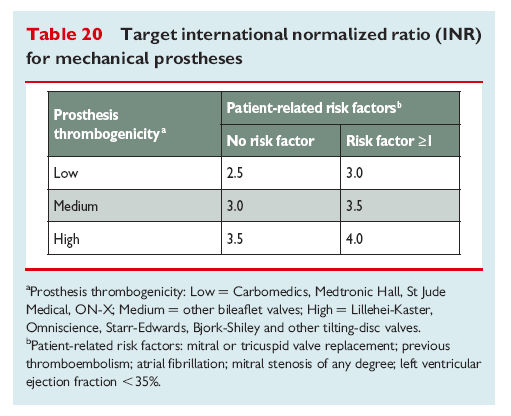I have an old (it's been in my chest since 1991) St. Jude (yeah, others have much older valves). My stupid clinic decided that my range should be 2.0 - 3.0. Up until these wizards decided that the range should be so narrow, my other doctors were comfortable with 2.0 - 3.5. Sure, as the INR goes up, the risk of bleeding also increases, but I'm not worried about an INR between 2.0 and 4.0.
It's good to keep it, for my aortic valve, to somewhere between 2.5 and 3.5 (or 3.0, perhaps). I'm much more comfortable above 2.0 than I am anywhere near the bottom of my range.
As some of the veterans of this forum probably know, I have a few different meters, from different manufacturers. I trust that my Coag-Sense is consistently just slightly below the lab.
My CoaguChek always seems to be at, or slightly higher than, the lab. An average of the two is often pretty close to lab results.
So -- in answer to your original question, I'm pretty sure that the range for my St. Jude valve in the aortic position is 2.0-3.5, and I'm most comfortable with it (according to my meter) above 2.2 or 2.3 and below 3.1 or 3.2.
------
On another matter entirely, I want to relate a bad experience with my hospital's anticoagulation lab. I self-test, but go to the lab about once a month, to get a result to compare to my meter. Others, of course, go there for monthly tests because that's the protocol that this stupid clinic implements. Three days ago, I had a blood draw. Two hours later, I did a test at home using my Coag-Sense. The Coag-Sense gave me a 2.7. I was comfortable with that -- I figured that the lab result would be close to 3.0.
This afternoon the stupid clinic called me. They told me that my INR was 3.32. (A year ago, they wouldn't have bothered me because this would have been in their old range definition). This time, they were troubled by it.
The asked the usual questions - diet change, etc. I told them that the day AFTER the blood draw, I had about 1/4 ounce of whiskey. That's all it was.
I was told to skip my dose tonight. It made no sense to me. I tried to explain how wrong this stupid clinic was -- that testing people once a month is of little value because it only takes a week or so with an INR hat is too low for a person to have a stroke. Testing once monthly wouldn't be adequate to detect problems between tests.
They couldn't understand this. I was told to skip a dose today -- because I had 'been drinking.' I told the person that I hadn't been drinking. The 1/4 ounce was consumed the day AFTER the blood draw. I was told to return in two weeks for a new blood draw. DO THEY REALLY THINK THAT the effects of one missed dose today would show up in my INR in TWO WEEKS?
I hope that if you are using an anticoagulation clinic, that your clinic isn't as ignorant as this one.




